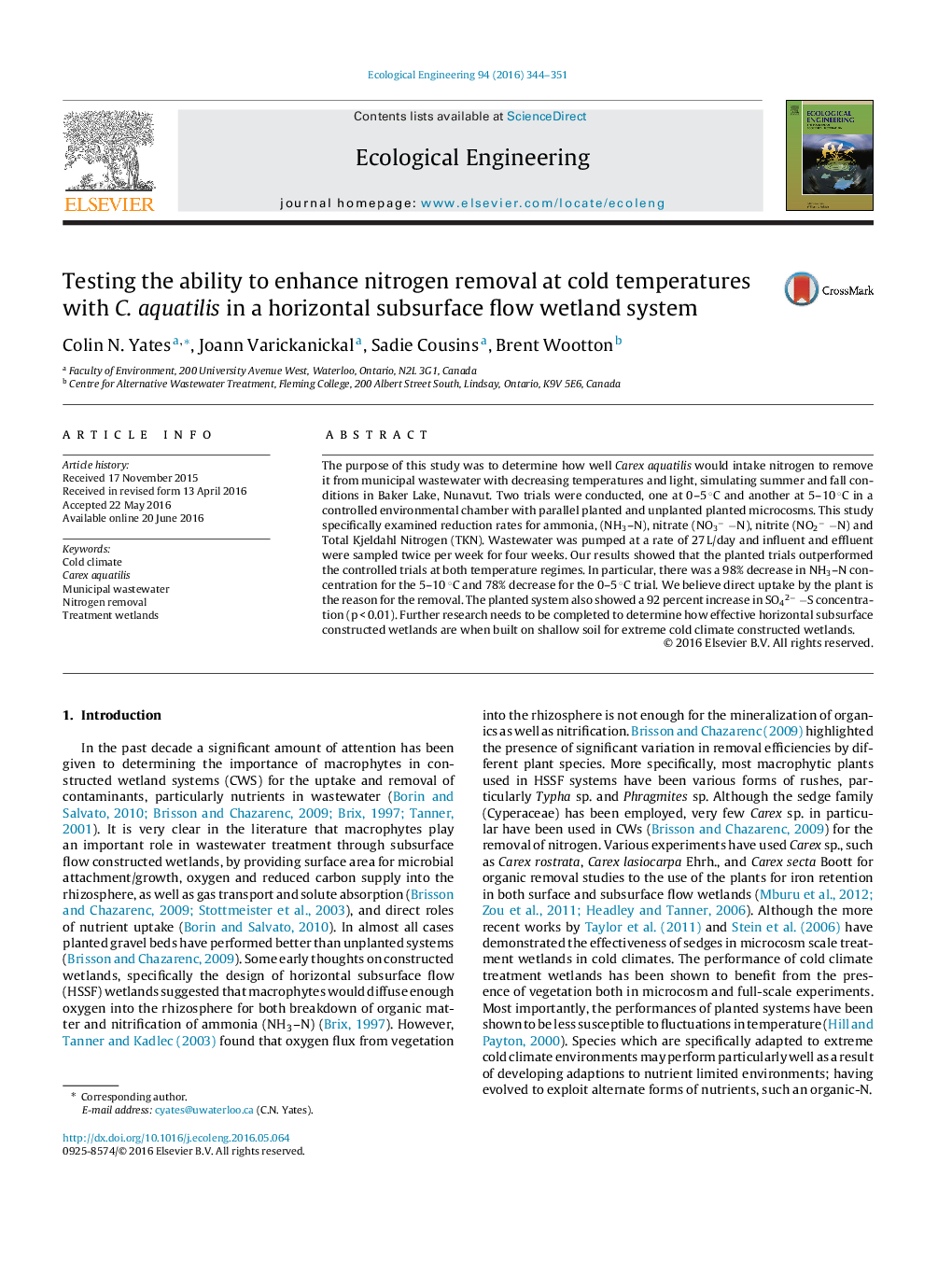| Article ID | Journal | Published Year | Pages | File Type |
|---|---|---|---|---|
| 4388562 | Ecological Engineering | 2016 | 8 Pages |
The purpose of this study was to determine how well Carex aquatilis would intake nitrogen to remove it from municipal wastewater with decreasing temperatures and light, simulating summer and fall conditions in Baker Lake, Nunavut. Two trials were conducted, one at 0–5 °C and another at 5–10 °C in a controlled environmental chamber with parallel planted and unplanted planted microcosms. This study specifically examined reduction rates for ammonia, (NH3–N), nitrate (NO3− −N), nitrite (NO2− −N) and Total Kjeldahl Nitrogen (TKN). Wastewater was pumped at a rate of 27 L/day and influent and effluent were sampled twice per week for four weeks. Our results showed that the planted trials outperformed the controlled trials at both temperature regimes. In particular, there was a 98% decrease in NH3–N concentration for the 5–10 °C and 78% decrease for the 0–5 °C trial. We believe direct uptake by the plant is the reason for the removal. The planted system also showed a 92 percent increase in SO42− −S concentration (p < 0.01). Further research needs to be completed to determine how effective horizontal subsurface constructed wetlands are when built on shallow soil for extreme cold climate constructed wetlands.
